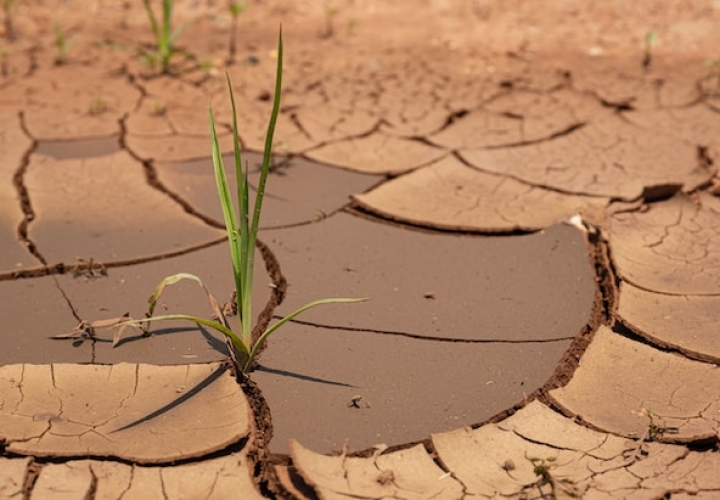
Jessica Roberts
Climate Change: Droughts and the people of Cameroon
Most Read Stories Today
-
Water Scarcity and Artificial Rainfall: The Positive and The Negative Effects of Cloud Seeding, including Health Hazards and Climate Implications.
-
Renewable Energy in Rural Areas: Challenges, Opportunities, and Successful Rural Projects
-
Pakistan's Agriculture at Risk Due to Climate Variability
-
South Africa's Recent Floods: Is Climate Change to Blame?
-
South Korea's floods: root causes and prevention strategies.
-
South Africa: Cape Town, A City Under Fire
-
The Human Cost of Climate Disasters
-
Our Oceans, Our Future: The South African Dilemma of Overfishing
-
Degenerative Impact of Hydrocarbons On The Environment.
-
Sustainable Urban Planning - Copenhagen and the Path to Climate Resilience
Climate change is impacting Sub-Saharan Africa in a multitude of ways, bringing stressors such as flooding, drought, and windstorms.
Whilst droughts substantially impact any region of the world, the effects are most felt in developing countries such as Cameroon, as they have a lower capacity for preparing for and responding to drought events. Drought can be defined as times of deficient rainfall over long periods, the effects of which may be felt meteorologically, agriculturally, and socio-economically.
Analysis of rainfall data from the last 50 years has indicated a decrease in overall rainfall in northern Cameroon. Droughts have been commonplace, 26 have occurred during this period with varying frequency and intensity, though longer uninterrupted drought episodes have been happening since 2010. Mild droughts have been particularly prevalent, with the majority occurring every two years. These have been attributed to year-to-year and monthly variabilities in rainfall, rather than an abrupt reduction in total rainfall in the last decade.
Recurring droughts are negatively impacting the lives and livelihoods of the people of Cameroon. The consequences of drought can be grouped into four categories; human health problems, crop failure, drying up of water sources/increased soil moisture loss, and loss of vegetation/pasture. All of these threaten the food security of the population and increase the occurrence of health issues and poverty rates.
Impacts of drought on locals
Crop failure has resulted in financial losses and food shortages since many livelihoods are reliant on animal rearing and crop production. Drought reduces agricultural yields and therefore income, whilst extra money must also be spent on replacement animal feed. Human food consumption is also reduced, with people decreasing portion sizes and the number of meals they eat to make food from previous harvests last as long as possible. Additionally, food insecurity resulting from poor harvests is worsened by the increases in grain prices that occur following poor harvests.
Water scarcity is a common result of drought in semi-arid areas, occurring due to high temperatures and below-average rainfall. The loss of water sources (rivers, wells, ponds, etc) forces people to walk much further in search of water, sometimes as far as 7km to other nearby villages. In cases, like during the 2017-2018 drought, people were forced to dig in dried-up riverbeds to find water. This extra burden usually falls on women and children, as they are usually the ones responsible for fetching water in Cameroon. Animals are known to share these water sources, putting humans at risk of conflict and disease.
Lack of grazing land for livestock resulting from drought is a source of conflict between arable and pastoral farmers, as the latter complain when livestock resort to feeding on their crops. This food scarcity, which is worsening as droughts become more commonplace, is resulting in an increased incidence of weight loss and subsequent death in livestock, especially during the dry season (March-May).
Drought can have severe negative effects on human health. In Cameroon, symptoms can range from heat stress, severe headaches, and weight loss to cholera and diarrhea from drinking contaminated water. Cases of malnutrition have also been reported, particularly in children under five years of age due to poor nutrition associated with failed harvests. These heat-related illnesses should not be underestimated; they are reported to be the leading causes of morbidity and mortality in northern parts of Cameroon.
Adapting to drought
The people of Cameroon have not been idle in their response to recurring droughts, they have developed means to cope with these conditions to minimize the impacts on their livelihoods. Farmers especially have needed to make changes. These changes include; growing crop species that are more drought tolerant, altering planting regimes, improving food storing facilities, and excavating riverbeds. Tree branches and crop residues are being used as animal fodder, with livestock keepers negotiating with pastoral farmers for any surplus they might have.
While this can be a good source of income for pastoral farmers, it is not sustainable in severe droughts where much of the soil moisture has been lost. Other plants such as buffelgrass, which have been noted to grow in drylands and retain their moisture content when properly stored, are now being grown during the rainy season and fed to livestock during periods of drought, as is done in other parts of Africa.
While local practices are helping to reduce the negative impacts associated with drought, the people of Cameroon are still faced with steep challenges. Access to resources and institutional help is limited. These include access to credit and financial aid, as well as a lack of water needed to irrigate crops. Improved drought warning, better support from the government, and credit for agrarian workers to purchase supplies to sustain their livelihoods in times of need. These steps would go a long way in helping the people of Cameroon tackle the challenges they face posed by global climate change.

Terms & Conditions
Subscribe
Report
My comments